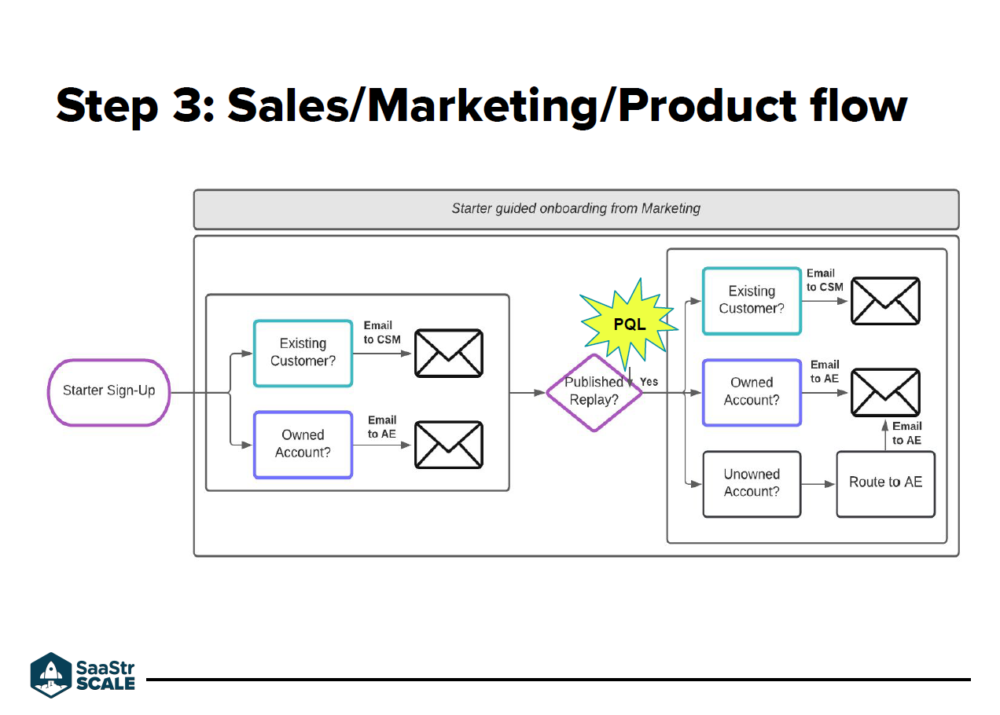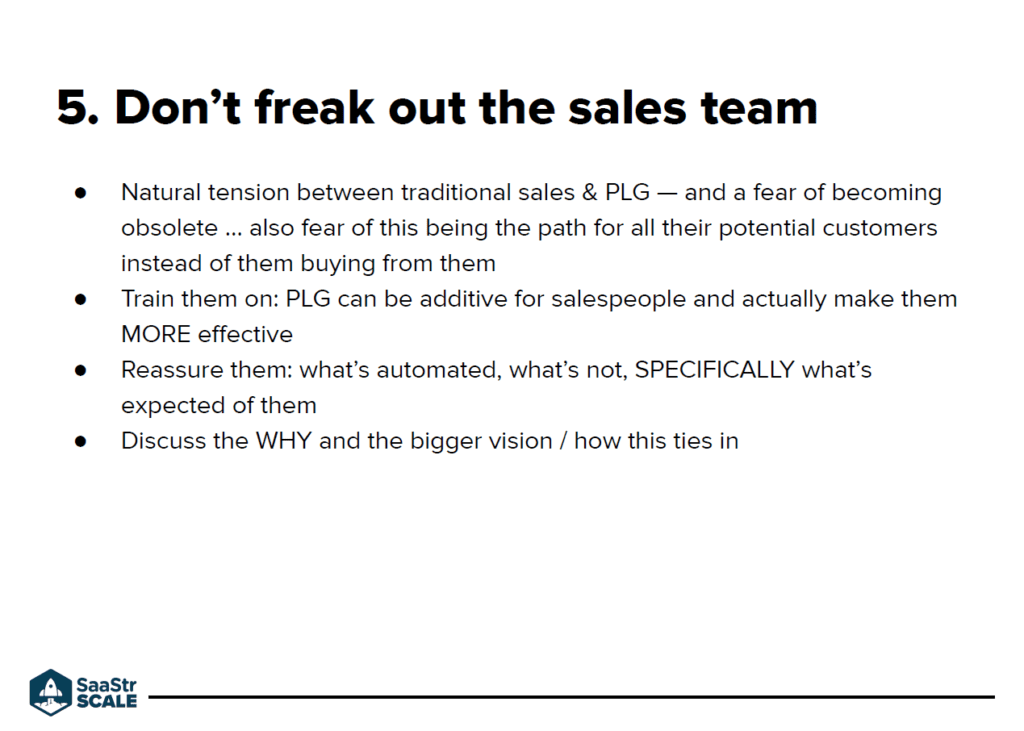More companies are embracing product-led growth (PLG), but these transitions can come with some serious growing pains. We’ve experienced this first hand at Reprise, and if you enjoy learning from the mistakes of others, then you’re in for a treat.
Want more? Enter your email below for the latest SaaStr updates
Before Product-Led Growth
Our target market is US-based enterprise sales, marketing teams, and companies with software. And because “Every company is now a software company,” according to Microsoft CEO Satya Nadella, that’s no small market. We flooded this market with the now-classic double funnel model:
- The “Inbound” Funnel. We never gated our content and operated on demo requests only. Those requests went to our AEs, who scheduled everything through Chili Piper.
- The “Outbound” Funnel. We had about ten BDRs handling our target account list, although we still took the time to tailor our message. This included videos, social posts, and all the “show-me-you-know-me” that embody effective outreach.
Even though we empower other companies to use PLG, Reprise had a fairly classic approach to enterprise sales. Potential clients might find themselves enticed by our product, work through a gauntlet of qualification calls and BANT questions — until, finally, they get their hands on a demo. And then, in evaluation — maybe — you might buy the product itself.
But do companies want to buy this way anymore? Whether it’s Uber or Airbnb, the new B2C landscape means that more and more clients want instant gratification.
So how can PLG provide this?

How to Approach Product-Led Growth
We decided to offer a free, lightweight version of our product on our website. Our vision, at the time, was to capture sign-ups that we could then transform into PQLs. But how did this work in practice?
- Figure out what it is. Getting into PLG prompted a bit of an identity crisis. (We thought we were enterprise!) But it also required that we sit down with our product team so that we could better understand how and why our started product needed to exist at all.
- Figure out how to market it. Now that we know what we have, we have to determine if we should put money behind it, and if it should be our primary CTA. In our case, we decided – for better or for worse – not to do either of those things.
- Sales, marketing, and product flow. How do you smoothly transition your starter sign-ups into genuine PQLs? We had to bifurcate both existing customers and owned accounts, but we also had to decide on a trigger for when, in that product flow, something qualified as a PQL. From there, the sales team can swoop in to provide a more human touch, while simultaneously working to maintain tight alignment between product, user data visibility, and marketing.
- Train sales. Informing your sales team is crucial. Try to frame the purpose of your product so that the sales team understands how PLG can actually be a source of empowerment, creating both a frictionless experience and developing a pipeline for future opportunities. And don’t forget to develop strong outreach sequences and call scripts so that sales knows how best to follow up and collaborate with your sign-ups.
- Launch. You made it!
Metrics So Far
Fair warning, “so far” is the operative term here. We usually have a four- to six-week lag between developing a market qualified lead and funneling them into the appropriate pipeline. We have found, thus far, a solid 34% conversion from product sign-up to PQL.
Of course, many of these PQLs come from small businesses and emerging segments. But as all sizes of organizations work towards full-product PLG, we are more than happy to be there for them when they’re ready.

Avoiding Our Mistakes
What did we learn from this experience?
- Beware of product delays. We honestly thought that three months should be enough of a buffer after our soft launch. Little did we know; even if you’re launching a free, scaled-down version of your current product, it’s still something new, and you should expect just as much delay, or more, as that of a feature launch.
- Stand your ground. We spent so much time worrying about what to expect from our release that we ended up adding a lot of friction to the process so that we wouldn’t be flooded by thousands of sign-ups. In the end, sometimes you have to pick a direction and move forward. Trust the process.
- Time for ops. More systems lead to more complexity. Start the conversation with ops early and often. Your ops team will thank you.
- Demand generation. We may have, three weeks after launch, realized that we had forgotten to turn on our how-to nurture, on top of sign-ups going to the wrong team. Please, think through your target accounts thoroughly (or, at least, more thoroughly than we did).
- Don’t freak out the sales team. A little tension between traditional sales and PLG is totally natural, but that doesn’t mean you should neglect their fears. Reassure your team that a PLG approach can be additive, and not a harbinger of customers circumventing sales entirely. Loop them into the company’s broader vision, and how important they still are.
- Go time. PLG can drive down acquisition costs, increase customer NPS scores, and more. But be ready to roll with the punches.
PLG requires immense planning and change management. Mistakes are unavoidable, but the key is to make better mistakes and then learn from those mistakes.

